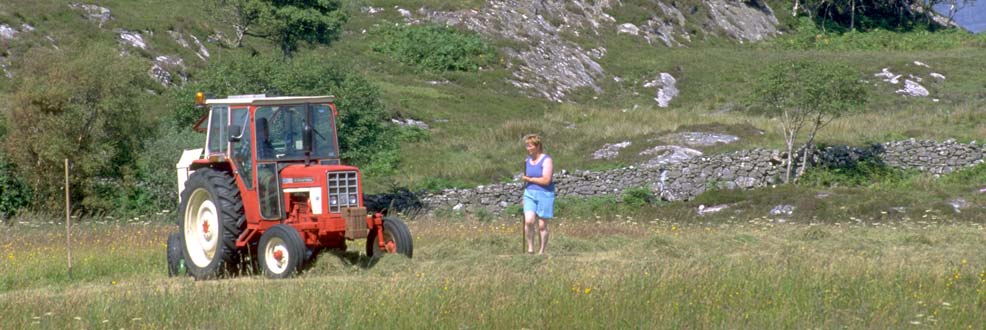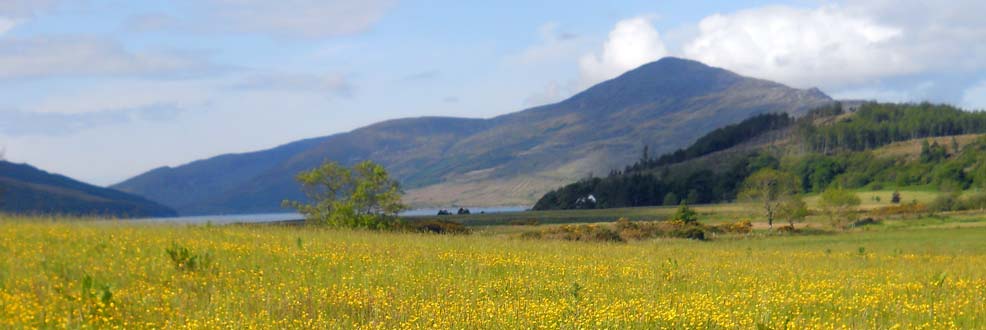Crofting Support Measures
Crofting Agricultural Grant Scheme
The Crofting Agricultural Grant Scheme provides grants for crofters to make improvements to their crofts and help to sustain their businesses.
If you are a tenant of a croft you are eligible for the scheme provided you are the tenant of a registered croft or the official sub-tenant (approved by the Crofting Commission) and the work you are undertaking is one assisted under the scheme.
If your croft is officially sublet then all applications and claims should normally be submitted by the sub-tenant during the period of the sublease. As the official sub-tenant of a croft, you are advised to obtain the principal tenant's permission for any improvement works you intend to carry out, and agree compensation payable at the end of the sublet.
In addition, your entitlement to major capital improvement works may be restricted by the length of the sublease approved or remaining. In those instances where the remaining length of the lease prevents the application being submitted by the sub-tenant, the tenant may make the application in their own right.
A common grazings committee or grazings constable regulated and registered by the Crofting Commission may apply where the proposed operation is on common grazings.
Owner-occupier crofts are treated in the same way as tenant crofts.
Funding can be used for:
• capital projects, such as the construction or improvement of agricultural buildings
• the establishment of Common Grazings Committees, which is responsible for managing and maintaining common grazing, and is elected by crofters who use it
Funding for eligible capital projects can cover all aspects of the project, including the cost of materials, transportation of materials, costs of contractors and your own labour.
The total amount of grant aid you can apply for in any two year period is:
• individual crofter: up to £25,000
• groups of crofters: up to £125,000
Aims and objectives
Crofting exists in areas of Scotland where agricultural production and investment costs are traditionally high. It is widely regarded as a socially, culturally and environmentally important activity, for the sense of identity it provides, the landscape it produces and the systems of communal working it supports.
This scheme is designed to aid and develop agricultural production on crofting businesses, thereby sustaining the economic basis of crofting and helping retain people in rural communities. Funding supports crofters in carrying out individual or collective investments that reduce production costs.
Examples of projects include (but are not limited to):
• improving stock control
• protecting crops from damage by deer
• wintering of livestock
• storing winter fodder
• improving grassland management
The Scottish Rural Development Programme 2014-2020
The Scottish Rural Development Programme 2014 - 2020 delivers Pillar 2 of the EU Common Agricultural Policy (CAP). It funds economic, environmental and social measures for the benefit of rural Scotland. The key purpose of the SRDP 2014 - 2020 is to help achieve sustainable economic growth in Scotland’s rural areas and the priorities remains broadly the same as the previous programme: The main priorities are:
• Enhancing the rural economy
• Supporting agricultural and forestry businesses
• Protecting and improving the natural environment
• Addressing the impact of climate change
• Supporting rural communities
After extensive negotiations the SRDP 2014 - 2020 was formally approved by the European Commission on 26 May 2015. A modification proposal was subsequently submitted to the European Commission and the revised Programme document (version 2.2) was approved on 6 June 2016.
A list of the schemes that make up the SRDP, along with a brief description, is available. Should you wish to apply for funding or to access scheme guidance as well information on the payment rates please go to the Rural Payments and Services website.
Basic Payment Scheme
Full guidance for the Basic Payment Scheme is available from Rural Payments and Services at ScotGov.
The main features of the scheme can be found here.
Background to the scheme
The Basic Payment Scheme is a result of reforms to the Common Agricultural Policy that will affect farmers and crofters from 2015. The need for reform came from three reasons:
• so as to better address the challenges of:
- food security
- climate change and sustainable management of natural resources
- looking after the countryside and keeping the rural economy alive
• to help the farming sector become more competitive and to deal with the economic crisis and increasingly unstable farm-gate prices
• to make the policy fairer, greener, more efficient and more effective and more understandable
The Basic Payment Scheme replaces the Single Farm Payment Scheme (SFPS). To be eligible to apply for the scheme you must fall into one or more of the following categories:
• automatic right of allocation – for businesses who were active in 2013 and declare land in 2015
• active farmers in 2013 – you must be able to supply evidence if you did not apply for SFPS. Please note definition of this point is still being looked into
• businesses in excluded sectors – fruit and vegetable producers or deer farms can apply
• businesses sold or leased – the buyer or lessee can take over the original business' qualification for subsidy
Participation
You can participate in the scheme and receive subsidy if you:
• are an active farmer
• hold Basic Payment Scheme entitlements, either through an original award or having acquired them by transfer
• submit a claim in the form of a Single Application Form (IACS) Aid Application
• farm a minimum of three hectares of eligible land
• have one eligible hectare of land for each entitlement
• be involved in agricultural activity
• maintain your land in Good Agricultural and Environmental Condition (GAEC) and meet a number of Statutory Management Requirements covering the environment, food safety, animal and plant health and animal welfare (Cross Compliance)
• undertake agricultural practices beneficial for the climate and the environment – commonly known as “Greening”. This is a compulsory part of Direct Payments and you could lose your right to payments if you fail to comply
• keep comprehensive, accurate, and up-to-date records
Your holding may be inspected to verify your claim and it is a condition of receiving subsidy that you co-operate with any inspection.
Cross Compliance
Payment under the scheme is conditional on meeting the Cross Compliance conditions.
Under Cross Compliance, you must continue to comply with the Statutory Management Requirements in force for public health, animal and plant health, environmental protection and animal welfare.
You must also maintain your land in Good Agricultural and Environmental Condition (GAEC).
Separate, detailed guidance is available below about Cross Compliance and all farmers should study the requirements and ensure that they understand what is involved. When you sign the Single Application Form, you are making a declaration that you have read all applicable guidance, including Cross Compliance requirements.
Failure to meet Cross Compliance conditions do result in penalties being applied to claims.
Croft House Grant Scheme
The Croft House Scheme provides grants for crofters to improve and maintain the standards of crofter housing, with the aim of attracting and retaining people within the crofting areas of Scotland.
Funding may be used for:
• major repairs
• internal improvement
• rebuilding work
Crofting Cattle Improvement Scheme (Bull Hire Scheme)
The 'Bull Hire Scheme' scheme is 'open to groups of at least two crofters within the crofting areas, providing high health bulls in areas where ownership and commercial hiring are uneconomic'.











